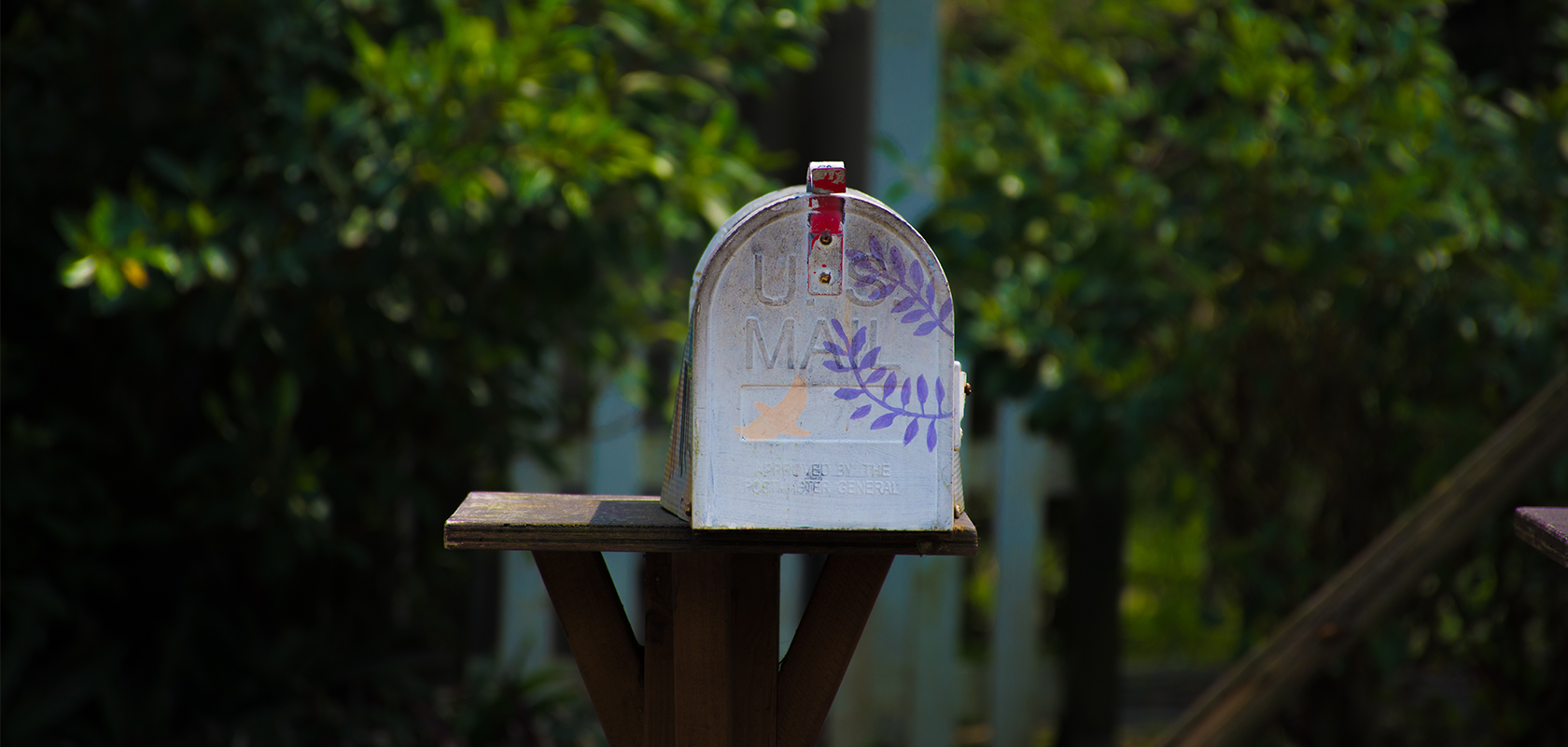We recently attended a breakfast talk hosted by AIGA Knoxville on designing for direct mail. Sheila Kirton, our local USPS Mailpiece Design Analyst (did you know those existed?), gave us a great refresher on what to do and not to do when designing direct mail and alerted us to some upcoming changes in mailpiece requirements. Since we found this so helpful, we decided to put together our own introductory guide to mailing standards. Even if you’ve worked on mailpieces before, there can be many gaps in your knowledge. Mail can be pretty tricky, and it’s difficult to know where to go for a comprehensive overview from a designer’s perspective.
Interesting Findings from the AIGA Knoxville Breakfast Talk
- The maximum length for a mailpiece in the Letter category is being reduced from 11.5 to 10.5 inches on September 8. Anything over 10.5 inches will be mailed as a Flat instead of a Letter. (This applies to Sumo-sized postcards, self-mailers, booklets, etc.)
- A square letter-sized mailpiece will receive a nonmachinable surcharge because it will tumble end over end instead of sliding smoothly through the equipment. Flats can be square, however.
- Glossy paper stocks can cause problems in the machines because they generate static electricity. They can also interfere with machine readability and incur additional charges.
- Some paper coatings or printing methods can interfere with the barcode your piece will receive during processing. A mailer that we received recently had a barcode which was badly smeared over a field of solid color. The color appeared to have been printed by a color laser / quick run method.
- Blue inks are more difficult for machines to read.
- Your envelope’s flap can be on either the front or the back side, but cannot be on the bottom edge.
- Your piece can have rounded corners, but they can have a radius no larger than 1/8 inch.
- Don’t use an open / cutout address window in your self-mailer; it can get caught in the machines. A booklet that we received advertising a well-known design conference demonstrated this error!
- Those clear tabs for closing self-mailers look nicer, but they often don’t stick as well as the opaque ones.
Mailpiece Design Analyst
Something you may not know even if you have been designing mailpieces for a while is that there is someone at the USPS whose job it is to help you design mail correctly and prevent unexpected postage costs and delays for you and your clients. Sometimes this information finds its way to you through others, such as printers or mailing services / presort bureaus, but the MDA is closest to the source.
From the USPS site: “Mailpiece Design Analysts (MDA) are postal employees specially trained to answer your questions regarding mailpiece design. These employees provide advice and issue rulings regarding acceptability for automated rates. MDAs provide technical assistance on mailpiece design to envelope manufacturers, printers, advertising agencies, and graphic designers.”
This includes testing your chosen paper stocks, if needed, and checking your artwork via email/PDF for problems before you send it to print.
To find the analyst assigned to your zip code:
http://pe.usps.gov/mpdesign/mpdfr_mda_lookup.asp
Brief Introduction to Mailpiece Shapes
We’ll look more in depth at how mail is categorized in upcoming posts, but one of the first things you should know, which will make it easier to navigate the USPS’s reference documents, is that there are only four categories of mail shapes.
Any piece of mail will be classified as one of these, depending on the dimensions of the piece. Many things which do not seem like a letter, for example, actually fall into the Letter category, such as a small booklet, a self-mailer, or a large postcard.
Small postcards under 4.5×6 in. and being sent First Class are the only things theUSPS places in the Postcard category; a Postcard is really only a type of discounted Letter.
Other Resources
For those who would like to dive right in, these have been the most helpful online resources for us. The USPS publishes an overwhelming number of reference documents, many of which repeat the same information in ways that are tailored for the different audiences to which they speak. The more in-depth resources also tend to include lots of information on sorting methods, barcode creation, etc. which most designers don’t need to know; that information is targeted at mailing professionals (presort bureaus; postal employees; in-house mailing departments).
- Business Mail 101: Online introductory tool for beginning or infrequent mailers (this applies to a lot of designers!), including a glossary.
- Quick Service Guides: A more user-friendly version of the information in the Domestic Mail Manual. Includes visual diagrams of sizes and shapes of the different types of mail (see the sections labeled “Physical Standards”).
- USPS Domestic Mail Manual (the Bible of mailing): It’s actually not easy to locate this online version of the ultimate domestic mailing reference when browsing the USPS site.
- USPS International Mail Manual
____
In our posts to follow, we’ll examine the different shapes and classes of mail, and discuss how to ensure that your mailpiece will travel safely through the post office’s automated equipment.




